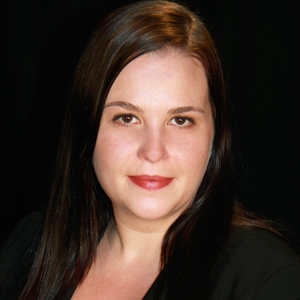Russia’s economy is looking up, in a small way. But how many big foreign investors will bet on it?

Vladimir Putin is on a roll. The Russian strongman is winning his proxy war in Syria, adulated by the incoming US president and teaming up with OPEC to stabilize oil prices with promised production cuts. But raising Russia’s profile on the world stage will prove easier than attracting global investors to its stagnant economy, even if Putin caps his foreign policy triumphs by persuading the West to ease sanctions later this year.
The worst may be past for Russia’s economy, especially with oil ticking upward again. GDP should grow by about 1% in 2017 after two years of recession, the International Monetary Fund predicts. The country’s Micex Stock Market Index jumped 35% in the 12 months to December 15. Foreign direct investment (FDI) last year looked to be rebounding to the levels of 2013, before oil prices melted down and Russia’s Ukraine policy provoked the sanctions. “2017 should be a year of opportunity for Russia,” says Lauren Goodrich, senior Eurasia analyst for the US-based consultant Stratfor. “The Western front against it is completely fractured, and companies are seeing they can do business there again.”
Yet the Russia that Putin has shaped in the course of 16 years in power is ill-suited for a productive renaissance. A wrenching 45% slide for the ruble against the dollar since mid-2014 could provide the opportunity for a jump in competitiveness, but Moscow shows little sign of seizing it. Resurgent FDI—$6 billion in the most recent quarter, by official figures—is no more than one-fifth of Chinese levels, and much of it reflects politically driven investment from state companies in China and the Middle East.
The Chinese now own 20% of Russian petrochemicals producer Sibur, for instance, and are pouring cash into infrastructure to support their One Belt, One Road initiative. Russia’s marquee investment deal of 2016—Qatar Investment Authority and Swiss commodity trader Glencore’s $11 billion purchase of 19.5% of state oil giant Rosneft—also smacked of politics (and valued Rosneft at one-seventh the market cap of ExxonMobil, even though production volumes are similar).
SMALLER INVESTMENT STREAMS
Bona fide private foreign investment is coming in much smaller increments from companies, mostly European, who feel they cannot neglect Russia’s 140-million-strong market indefinitely. One subcategory is retailers like French supermarket chain Auchan or Swedish furniture-maker IKEA; the two have unfrozen expansions they had planned before 2014. “No matter what happens, Russia is always a number-five to number-10 market globally for these companies,” says Tom Adshead, chief operating officer at Macro-Advisory Ltd. in Moscow, which consults to strategic investors in the ex-Soviet Union. “Those retailers are making the choice to double down and increase market share.”
Another modest investment stream springs from midsize German companies that opt to produce in Russia, rather than export to it, thanks to devaluation and new protectionist measures by the Kremlin. “Exporting to Russia has become very expensive, and there is a new preference for Russian producers in all tenders by state-run corporations,” explains Matthias Schepp, chairman of the Russian-German Chamber of Commerce in Moscow. Recent mittelstand investors include pumpmaker Wilo, which is building a €35 million ($36.4 million) factory outside Moscow, and seed processor Petkus, which is spending €30 million on a plant in the southern agricultural hub of Krasnodar.
Import substitution by Russian companies is advancing, if at all, by similar baby steps, while exports beyond the country’s perennial raw materials base are barely on the horizon. The farm sector presents a microcosm of Russia’s predicament: Wheat production has more than doubled in recent years thanks to a currency advantage and favorable weather patterns, but almost all agricultural equipment needs to be imported. “You see prime minister [Dmitry] Medvedev still complaining about why Russians can’t make their own tractors,” says Padma Desai, a Columbia University economics professor who follows Russia closely. “More than 25 years after Communism, they have not been able to diversify from oil and gas.”
DIM RAYS OF LIGHT
Rising grain output is small recompense for the sufferings of the average Russian, who has seen disposable income shrink by 20% in the past three years, according to Macro-Advisory, and the attendant setback for what was supposed to be an emerging middle class that would gobble up consumer goods, housing and services.
Putin has made a propaganda point of Russia’s improvement in the World Bank’s annual ease-of-doing-business rankings, where it has indeed climbed from 124th position in 2011 to 40th this year. The president has set a goal of number 20 by 2018. But the table jars with reality for many investors, with the likes of Russia and Belarus finishing far ahead of such flourishing emerging markets as Israel or Chile. Markedly excluded from the World Bank’s calculus is corruption. Russia continues to flounder in 111th place in Transparency International’s widely used Corruption Perceptions Index, tied with inglorious peers Guyana, Azerbaijan and Sierra Leone.

Against this background, easing international sanctions could have a mixed effect on Russia, Schepp points out. (Donald Trump could alter the US measures by executive order after January 20. The European Union has to renew its sanctions every six months by unanimous vote.) A rollback could hurt nascent moves toward import substitution in food processing, as Moscow would likely drop its “counter-sanctions” against EU and US produce. But it could loosen hard-currency credit for heavier industry, leading to an uptick in investment.
Russia’s economy is a long way from being “in tatters,” as Barack Obama put it in 2015. But it is far off the hopeful track assumed for it by Goldman Sachs which allegedly coined the appellation BRIC—for the fast-growth megamarkets of Brazil, Russia, India and China—in 2001. India and China indeed went on to spearhead global growth over the ensuing 15 years, while Russia lost a thread that neither sanctions relief nor rising oil prices can restore. Growth slowed to 1% in 2013, with oil north of $100 a barrel. “The old economic model stopped working around 2012,” Adshead says. There is no new one yet.
Putin has proved uncannily successful at manipulating Russia’s peculiar mass psychology, staying popular with foreign adventures and a macho attitude despite economic devastation. But those same instincts have led him to compound Russia’s timeless weaknesses: bureaucracy that is at once omnipresent and lawless, governance by official fiat, worship of the state and denigration of private initiative. Global investors will put money into Russia sparingly and reluctantly so long as those trends persist, and they seem quite durable for now.



